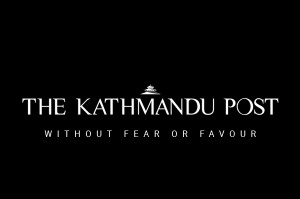Karnali Province
Study team in Jumla to prepare bases for enlisting Sinja civilisation as World Heritage
The Department of Archaeology has initiated discussions with locals and conducted research to establish the necessary criteria for the listing.
DB Budha
A study team has arrived in the Sinja region of Jumla to prepare the groundwork for including the ancient Sinja civilisation, the origin of the Nepali language, in the UNESCO World Heritage List.
The Department of Archaeology has initiated discussions with locals and conducted research to establish the necessary criteria for the listing. The team led by Director General of the Department of Archaeology Saubhagya Pradhanang explored various sites in Sinja, Hima and Kanakasundari rural municipalities to assess the historical and cultural significance of the civilisation.
According to Pradhanang, the visit was undertaken following the initiative of Sinja Rural Municipality. He emphasised the need to balance development with heritage conservation, warning that modern development should not come at the cost of erasure of ancient civilisations.
The department is currently working on proposals to include 15 new sites from across Nepal in the World Heritage List, including Sinja civilisation and Dewals (temples built in Shikhar style) of Dullu in Karnali Province.
“The consensus among stakeholders is clear—Sinja deserves World Heritage recognition,” Pradhanang said. “However, unregulated development threatens the preservation of its historical identity.”
Sinja Rural Municipality has been working continuously to push the authorities concerned to take initiative for the heritage listing. “Sinja represents the cultural identity of all Nepalis,” said Purna Prasad Dhital, chairman of Sinja Rural Municipality. “We urge authorities to expedite the process.”
With many of Sinja’s heritage sites deteriorating due to lack of conservation, local residents have expressed optimism over the department’s renewed efforts. The Sinja civilisation dates back to the 12th century when King Nagraj of Tibetan origin established the Khasa Empire, marking a significant chapter in Nepal’s history.
UNESCO sets selection criteria to include any site on the World Heritage List. There are 10 selection criteria; and to be included on the list, the sites must have global outstanding value and meet at least one of the selection criteria.
As per the selection criteria, the site must represent a masterpiece of human creative genius; exhibit an important interchange of human values; bear a unique or at least exceptional testimony of a cultural tradition or to a civilisation which is living or disappeared; contain superlative natural phenomena or area of exceptional natural beauty; and aesthetic importance, among others.
Nepal is working to include some of its heritages on the World Heritage List. The country’s effort to secure the World Heritage status for Tilaurakot, where Siddhartha Gautam spent his princely life before he became Buddha, is in the final stage. The 47th session of the World Heritage Committee, scheduled to be held in Bulgaria in July this year, will take important decisions regarding the status of Tilaurakot.
If approved by the World Heritage Committee, Tilaurakot will become Nepal’s fifth World Heritage Site after the Kathmandu Valley (which includes Basantapur Durbar Square, Patan Durbar Square, Bhaktapur Durbar Square, Pashupatinath Temple, Changunarayan Temple, Swayambhunath Stupa, Buddhanath Stupa), Lumbini, Chitwan National Park and Sagarmatha National Park.




 21.82°C Kathmandu
21.82°C Kathmandu













